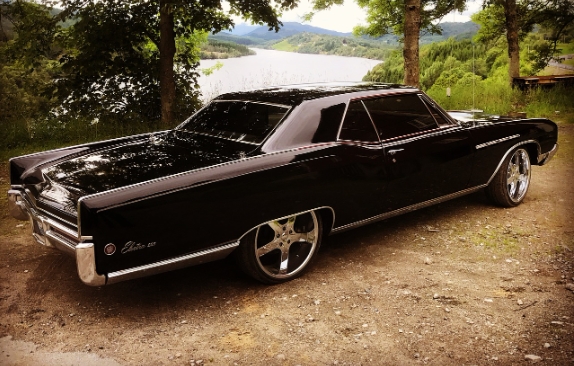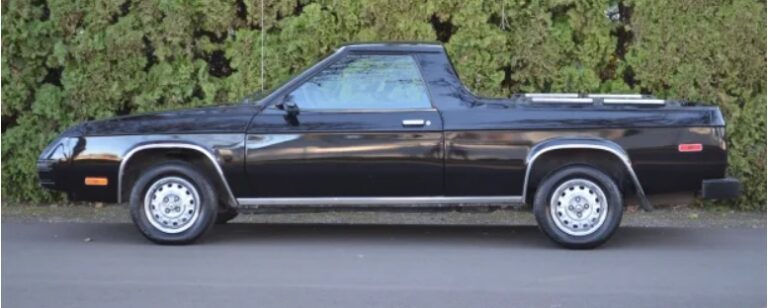The Evolution of the Buick Electra: A Legacy of Luxury and Performance
The Buick Electra is a nameplate that has etched its place in the history of American automotive engineering. Renowned for its luxury, style, and performance, the Electra has undergone numerous transformations since its debut in 1959. This article explores the evolution of the Buick Electra, tracing its production years, the various models, and the trim levels offered throughout its storied history.
The Birth of the Electra (1959-1960)
The Buick Electra was introduced in 1959 as a full-sized luxury car, marking a key moment for Buick as it expanded its lineup. The name “Electra” was derived from the Electra 225, with “225” denoting the car’s overall length in inches, making it one of the longest American cars of its time. The original model featured the classic Buick design elements, characterized by a sleek silhouette, prominent chrome accents, and a spacious interior equipped with a variety of luxury options.
In its inaugural year, Buick offered the Electra in only one trim level, the “Electra 225,” which was powered by a 364 cubic inch V8 engine. The Electra quickly garnered attention for its combination of power and elegance, setting the stage for its future iterations.
Slow Changes and Refinements (1961-1963)
The Electra underwent minor refinements in the early 1960s. The 1961 model introduced isolated rear fenders and dual headlights as standard features. By 1963, the Electra had evolved to include a more luxurious interior, leather upholstery, and an advanced stereo system, enhancing its status as a premium vehicle.
The Muscle and Performance Era (1964-1970)
The mid-1960s to early 1970s marked a significant period for the Electra as it became synonymous with performance and luxury. The 1964 model year saw the introduction of a new 401 cubic inch Nailhead V8 engine, resulting in impressive horsepower figures and solid performance on the road.
In 1965, Buick expanded the Electra lineup with the introduction of the Electra 225 Custom, a luxury-oriented trim that offered distinct stylistic elements, such as a more refined interior and exterior enhancements. The Electra Custom continued to grow in popularity through 1970, though the automotive landscape was beginning to shift towards smaller, more efficient cars.
The Land Yacht Era (1971-1976)
The early 1970s heralded the era of “land yachts,” and the Electra was at the forefront of this trend. The 1971 model featured a massive body design, epitomizing the American full-size car with an excess of chrome and comfort-oriented features. The Electra 225 further evolved to offer luxurious options, including an automatic climate control system and power windows.
By 1974, the oil crisis had changed consumer preferences, which led to a decline in the popularity of large, gas-guzzling vehicles. Buick responded by offering more fuel-efficient options while maintaining the Electra’s prestigious reputation.
The Transition Era (1977-1984)
In 1977, Buick unveiled a significant redesign of the Electra, shifting to a smaller platform while retaining a focus on luxury. The Electra was now offered in coupe, sedan, and limited trim variants. The Electra Limited, released in 1980, added even more opulence with features such as plush velour seating and distinctive exterior trim.
Throughout the late 1970s and into the early 1980s, the Electra continued to adapt to market demands, incorporating features like fuel injection and more efficient engine options. However, the passage of time and changes in consumer preferences contributed to dwindling sales figures.
The Final Years (1985-1990)
The final decade of the Electra’s production spanned from 1985 to 1990, during which time it witnessed another transformation in styling and technology. The body became more aerodynamic, and the Electra adopted a front-wheel-drive layout, in line with industry trends. A focus on electronic features, safety, and efficiency characterized this era.
The 1986 model year introduced new trim levels such as the “Electra Park Avenue,” which was designed as an even more upscale version of the Electra. The Electra Park Avenue included additional luxury features and advanced technology, giving it a distinct identity within the Electra family.
However, as the automotive market continued to shift, the Electra struggled to maintain its foothold. The final model, produced in 1990, marked the end of an era for the Electra nameplate. By then, consumer preferences had shifted toward smaller, sportier vehicles, leading to the discontinuation of the Buick Electra.
.

.
The Electra’s Legacy
Though production of the Electra ceased in 1990, the nameplate remains integral to Buick’s identity and history. The Electra served as a testament to the brand’s commitment to luxury and performance, offering a glimpse into America’s automotive past. Over the years, the Electra built a loyal following and became symbolic of an era characterized by bold styling, comfort, and innovation.
Key Models and Trim Levels Overview
Here is a comprehensive overview of the models and trim levels offered throughout the Electra’s production years:
- 1959-1960:
- Electra 225
- 1961-1963:
- Electra 225
- 1964-1970:
- Electra
- Electra 225 Custom
- 1971-1976:
- Electra 225
- Electra 225 Limited
- 1977-1984:
- Electra
- Electra Limited
- 1985-1990:
- Electra
- Electra Park Avenue
In conclusion, the Buick Electra stands as an iconic representation of American automotive ingenuity, evolving dramatically over its production run. Each iteration captured the essence of its time, emphasizing luxury, comfort, and performance, while navigating the evolving landscape of consumer desires. Though no longer in production, the Electra’s impact on the automotive world is undeniable, making it a cherished piece of Buick’s legacy.







